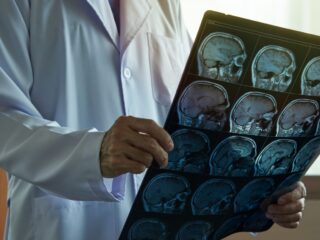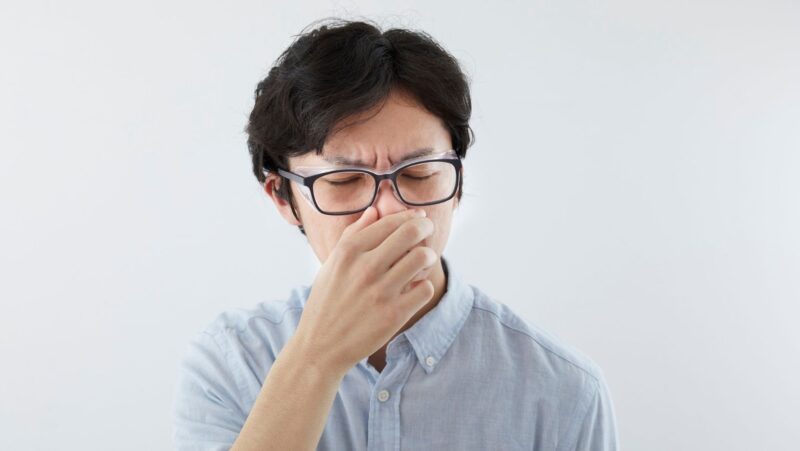
We spoke with several health experts about how antioxidants work, and how to make the most of them.
What are antioxidants, anyway?
Annette Snyder, is a Certified Registered Dietitian at Top Nutrition Coaching says: Antioxidants are substances in the body that share an ability to act as protectors of our 1 trillion plus cells. They sacrifice their own electrons (tiny charged particles) to molecules called free radicals. Free radicals are unstable and need more ‘parts’ (electrons from other cells) to become stable. They are made as byproducts of chemical changes within each cell (metabolism). The term ‘antioxidant’ describes the process above, not the substance itself. Each antioxidant has unique actions and properties.
Thousands of different substances can act as antioxidants. Most occur naturally. Some we make in our body, others we get from food or other sources. In plants, they are defenses against the local environment—when we eat plants, we eat their antioxidant protectors and reap the benefits.
Antioxidant types and how they work
Substances that act as antioxidants are divided into groups according to how they work: primary, secondary, and tertiary.
• Primary: scavenge free radicals and prevent them from doing damage
• Secondary: slow down the action of any free radicals that get past the primary defense
• Tertiary: repair any damage that was done, support body functions, and even speed up muscle strain recovery, reducing oxidative stress and inflammation in the muscles, which can speed up the healing process and reduce soreness.
Here, we take a closer look at natural primary and secondary antioxidants, from both inside and outside of the body.
Natural, from outside the body: We get these from plants (fruits, vegetables, spices, herbs). When our body’s own antioxidants are busy with free radical defenses and can’t protect the body well enough, we get backup from these sources:
• Vitamins (ascorbic acid/Vitamin C, tocopherols/Vitamin E, retinol/Vitamin A) • Trace elements (selenium, zinc, copper, manganese, iron)
• Carotenoids (alpha/beta carotene, zeaxanthin, lutein, lycopene)
• Polyphenols (flavones, isoflavones, flavanols, anthocyanins, phenolic acids)
Natural, from inside the body: This family includes enzymes and non-enzymes, which act in different areas of the body. Enzymes are proteins made by a cell; they start up important chemical reactions needed for normal body function. These enzymes are our primary defense system. Non enzymes are the backup system, and include Vitamins C and E, coenzyme Q, melatonin, carotenes, iron, and copper. Non-enzymes go after stray free radicals that got past the initial defense, acting like tiny bounty hunters.
What are free radicals?
Free radicals come in many shapes, sizes, and forms. They like to gobble up electrons and steal them from any nearby substances that will give them. Electron ‘theft’ can fully alter the ‘loser’s’ structure or function.
Free radicals are formed all the time in the body. They cause serious harm very quickly without antioxidants stepping in. We make free radicals as byproducts from turning food into energy, and we are exposed to them from outside sources. Free radicals also serve helpful roles in the body— and we need to maintain a balance of free radicals and antioxidants. Some free radicals that the body makes are vital for gene expression, cell growth, and division.
When free radicals outnumber antioxidants, it leads to oxidative stress. Continued oxidative stress damages DNA and other important molecules in the body and can lead to cell death. Damage can change the instructions coded in a strand of DNA. Damage to DNA raises the risk of cancer and influences how we age, as free radicals build up throughout the body over time. Free radicals can alter a cell’s membrane (protective outer lining) and change the flow of what enters and exits the cell. This can built-up toxins that further harm the cell. Several chronic diseases take root with oxidative stress.
The following can lead to excess free radicals, and thus oxidative stress:
• air pollution/ozone
• cigarette smoke
• alcohol intake
• toxins
• high intake of polyunsaturated fats
• radiation from sun exposure
• bacterial/fungal/viral infections
• consuming too much zinc or too much iron
• intense and prolonged exercise (more so if you are new to it)
• consuming high amounts of antioxidants like Vitamins C and E
Natural antioxidant sources
• Vitamin C: broccoli, Brussels sprouts, cantaloupe, cauliflower, citrus fruits, grapefruit, leafy greens, kale, kiwi, papaya, strawberries, sweet potato, tomatoes, bell peppers • Vitamin E: almonds, avocado, leafy greens, peanuts, red peppers, sunflower seeds • Carotenoids (beta-carotene, lycopene): apricots, asparagus, beets, broccoli, cantaloupe, carrots, bell peppers, mangoes, dark leafy greens, peaches, pink grapefruit, winter squash, sweet potato, tangerines, tomatoes, watermelon
• Phenolic compounds: quercetin (apples, red wine, onions), catechins (tea, cocoa, berries), resveratrol (red/white wine, grapes, berries), coumaric acid (spices, berries), anthocyanins (blueberries, strawberries)
Lena Bakovic, RDN, CNSC at Live It Up says: Spirulina is a type of blue-green algae that is rich in nutrients and antioxidants. It’s made up of approximately 70% protein and contains most of the essential amino acids that the human body needs. Spirulina is also rich in vitamins A, B1, B2, B3, B6, B9, and E, as well as minerals such as iron, magnesium, manganese, potassium, and selenium, and can be easily found in green powders.

Antioxidant supplements: yea or nay?
How single antioxidants act in a test tube vs in the body is very different. High doses upset that delicate antioxidant-free radical balance and cause harm, such as kickstarting various cancers, instead of protecting cells. It thus can be dangerous to use large amounts of isolated antioxidants. We’ve already found that high-dose beta-carotene supplements can increase the risk of lung cancer in those who smoke, and Vitamin C/ascorbic acid can cause cell damage when unstable forms of metals (like iron) are present. Our hero becomes a pro-oxidant.
The whole package of antioxidants and other nutrients in plant foods can help prevent a variety of chronic diseases, but it’s unlikely that high-dose antioxidant supplements can achieve the same results. Antioxidants work best in combination with other nutrients, plant chemicals, and other antioxidants. Joelle Schafer-Abisdris, registered dietitian in Joelle Schafer-Abisdris, Montreal Registered Dietitian, emphasizes that antioxidants are not magical cures but essential helpers in reducing oxidative stress when coupled with a balanced diet and lifestyle.
Kat Benson, CSSD, CPT Certified Registered Dietitian at VNutrition recommends: Vitamin C is a potent antioxidant. One cup of fresh strawberries has 80 mg Vitamin C, roughly a day’s worth. There are plenty of delicious recipes and dishes that make it easy and enjoyable to get your daily dose. A supplement with 500 mg Vitamin C (667% of the RDA) does not contain the plant chemicals (polyphenols) naturally found in strawberries. The plant’s antioxidants can team up with Vitamin C to fight disease without upsetting that delicate defense system balance.
• About 70-90% Vitamin C is absorbed at intakes of 30-180 mg per day (the amount in many Vitamin C-rich foods). At doses over 1000 mg per day, absorption falls to less than 50% and we flush the rest down the toilet. Mega doses don’t necessarily mean more Vitamin C, as the body tightly controls the level.

The final word…
Nutrition science can be complex considering the interactions between nutrients and bodily systems. Nutrients from the food are often safer and easier to absorb than taking a single supplement, as they are packaged with ‘helpers’ that work together as a team. Concentrated doses of supplements can upset the balance of the body’s highly specific defense system. Consuming a wide variety of plant foods means you get a ready supply of nutrients and powerful substances that serve you the way nature intended.












